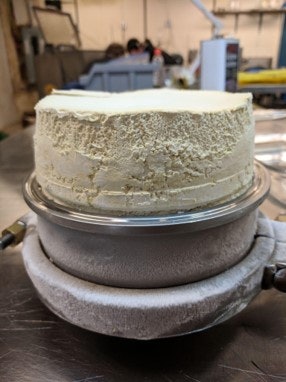Take a trip back in time to 2015, when the cannabis industry was in full bloom and a new player entered the scene: distillate. This clear and golden oil, created using short-path distillation, quickly became a hot commodity for creating smooth and powerful vape cartridges. As demand skyrocketed, processors rushed to learn the technique and keep up with the craze.

Fast forward to 2017, and the wiped film evaporator had become a must-have for scaling up and meeting the demands of the booming cannabis, hemp CBD, and vape industries. However, as supply eventually caught up with demand, the price of distillate corrected, and the cannabis processing industry became more competitive.
Today, those who have survived in the industry have had to adapt to the new reality of thin margins and efficient operations. This has led to a re-evaluation of production practices that may not be as cost-effective in this new environment.
While distillate will likely always have its place in the industry, it also comes with drawbacks. Distillation often results in the loss of valuable terpenes, and the equipment can be relatively slow and expensive. Enter the Controlled Crash Method, a newer method that utilizes low temperature crystallization reactions to separate and purify compounds. This method rapidly crystalizes the THC-A from crude oil, isolating the cannabinoids and preserving the natural essence and valuable flavor profile of the plant. Not only does this method retain terpenes and flavorful compounds, but it also offers advantages in terms of equipment and labor costs.
Traditional distillation methods rely on high temperatures and vacuum technology to separate and purify compounds, resulting in a highly concentrated and consistent product. However, the use of high temperatures leads to degradation of terpene profiles, which is a valuable aspect of the cannabis plant and contributes to its unique flavor and aroma.
The Controlled Crash Method addresses this issue by using cold temperatures to separate and purify compounds. This method rapidly crystalizes the THC-A from crude oil, isolating the cannabinoids so there is not a need for further processing. The equipment needed to operate the method can be set up to operate in-line with the extraction process so that the reaction takes place in a seamless process, downstream of extraction. The resulting output is pure, crystalline THC-A and high terpene extract, which is also commonly called terp-sauce.
The method separates terpenes and other flavorful compounds into a vessel where they never get exposed to temperatures above 15 C° (59 F°), thus preserving the natural essence and value of the plant. This produces a higher total yield and value of the concentrates produced, because two valuable concentrates products are produced, rather than one in the distillate process.
Additionally, the Controlled Crash Method also offers advantages in terms of equipment and labor costs. The equipment needed for distillation can be large and expensive, especially at high production rates. In contrast, the Controlled Crash Method requires less equipment and labor because the process consists of significantly fewer steps, machines, and time.
| CO2 Extraction to Distillate Method: 3 days | The Controlled Crash Method to THC-A: 3 hours | |
|---|---|---|
| 1 | Extract oil from biomass | Extract oil from biomass and collect the crude in the Crystallization Reactor |
| 2 | Redissolve oil into ethanol | Perform the Controlled Crash reaction |
| 3 | Chill to sub-zero temperatures, wait and winterize | Separate the terpenes and wash off the THC-A crystals |
| 4 | Filter out the wax, sometimes more than once | Empty two vessels of the pure THC-A crystals and terpene rich sauce |
| 5 | Recover the ethanol from the oil | |
| 6 | Decarboxylate the oil | |
| 7 | Distill the oil, the first pass takes off volatiles | |
| 8 | Distill the oil again, second pass separates the cannabinoids, and you have finished distillate |
While traditional distillation methods have proven to be effective in producing THC distillates, the Controlled Crash Method presents a new approach that addresses some of the limitations of traditional methods and offers potential benefits in terms of efficiency and preservation of the natural essence of the plant. As the cannabis industry continues to evolve, it is a technique that is worth considering for cannabis manufacturers looking to improve their production processes and increase their bottom line.
Will the Controlled Crash Method dethrone distillate as the reigning champ? Only time will tell, but it's certainly a new contender worth keeping an eye on.
